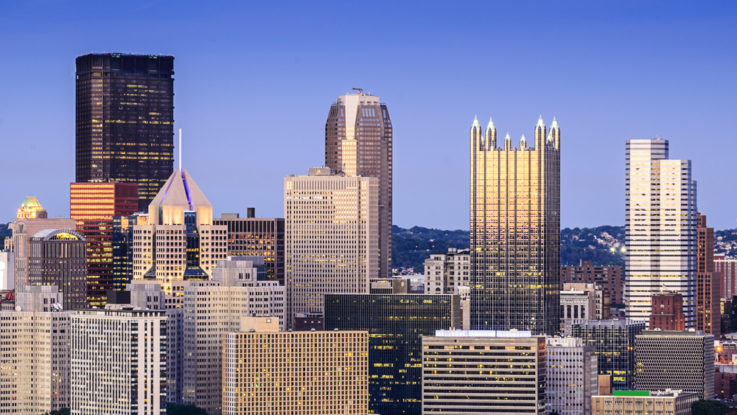
In an effort to reduce light pollution and increase energy efficiency, Pittsburgh, PA has plans to become a dark sky city. It will be the first city in the eastern part of the U.S. to adopt this policy, emulating other cities around the world, including Tucson, Sedona and Flagstaff in Arizona, and Fulda in Germany.
“It’s a relatively easy fix that all local governments could take on,” said Grant Ervin, Pittsburgh’s chief resilience officer and proponent of the dark sky ordinance. “It’s one of the tools that local governments have an ability to regulate and install as standard.”
The city has budgeted $16 million for the Dark Sky Ordinance and estimates it will save $1 million in energy costs per year. Starting in 2022, the city will switch lightbulbs in about 40,000 fixtures on the street and in public buildings to LEDs that emit less blue light, which can have a detrimental impact on plants, insects, and other wildlife. It will also add shades along bridges, roads and other public areas. The project should be completed within 18 to 24 months.
Studies have shown that excess artificial light can disrupt bird migration patterns, disrupt plant life cycles, and confuse the natural 24 hour day/night cycle for humans.
“All life on the planet has a cue that says depending on how much light there is at what time of year that it’s time to do something,” said Diane Turnshek, an astronomy lecturer at Carnegie Mellon University who consulted with Pittsburgh to establish its dark sky ordinance. “So when you have light pollution you’re changing the nighttime ecosystem in such a way that it’s disruptive.”
The International Dark Sky Association (IDA) is a nonprofit group with the mission of preserving the night sky, along with preventing other consequences of light pollution. Pittsburgh is following the group’s new values-centered outdoor lighting, which gives suggestions about wattage and color temperature, as well as when and how to keep lights on. The IDA’s program also includes dark sky parks, reserves and sanctuaries.